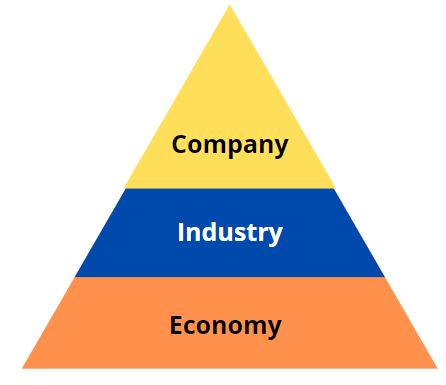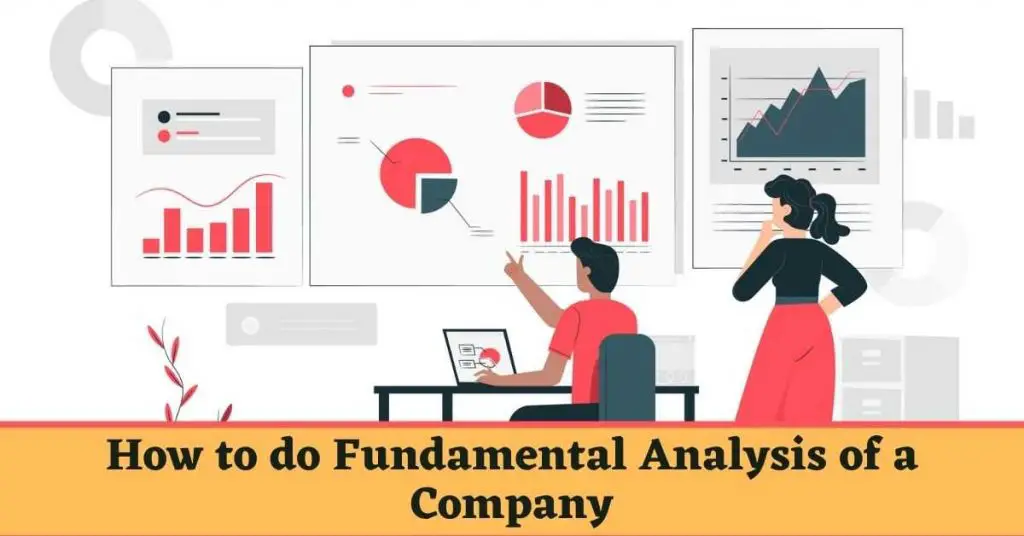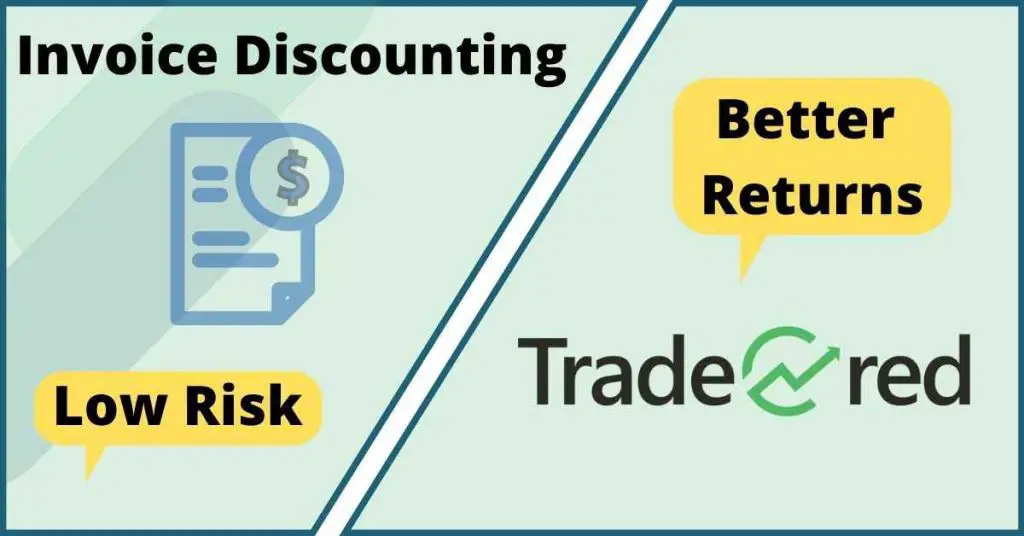Selecting stocks to invest in is not an easy task for beginners. Get a brief insight on How to do fundamental analysis of a company.
Have you started investing in stocks? If not, then maybe wanting to invest after being motivated by the last year’s bull run.
Many new investors have started their journey from last year aiding the stock market surge.
But are you confused, How to do Fundamental Analysis of a Company?
BSE and NSE have 5000+ companies listed, so choosing which companies to invest in or not is a big question.
Fundamental analysis is a process to identify which company has the better growth prospect in long term.
But you are not from a finance background, how would you be able to understand and analyze a company or its profit and loss?
How can a beginner start at least learning about fundamental analysis?
Relax.
For doing fundamental analysis, you do not need to be a degree holder.
You already know enough if you can handle your profit and loss and if you buy and sell stuff by doing some analysis during the process.
Most of the time, you might fear analyzing just because of going through pain and jargon of understanding finances.
I will make a small effort to remove this fear from your mind and will try to help you understand few parameters that would help do some fundamental analysis by yourself.
The aim is not to make you an expert through this article but to help set you on the path to understand the basics and start learning from there.
Let’s start.
How to do fundamental analysis of a company
Fundamental analysis can be divided into three steps
- Economic Analysis
- Industry Analysis
- Company Analysis

When you analyze in the same order mentioned above from steps 1-3 it is called Top-Down Analysis as you are analyzing a bigger picture of the economy first and then moving towards a specific company.
And when you study in the reverse order from steps 3-1, it is called Bottom-Up Analysis.
You can do a fundamental analysis of a company by using any of these approaches; there is no right or wrong as you have to follow all the steps in each approach.
Let’s start going through each of these steps and understand one by one.
What is Economic Analysis

The study of the economy of a country, where it is now, and what are the expectations and how it is placed to be favorable for some industries are economy analysis.
What initiatives are been taken up by the government to improve the overall financial growth?
We will go through some of the terms that you need to understand when we talk about the economy of India.
GDP
GDP (Gross Domestic Product) as the name suggests is the total monetary value of all the goods and services produced by the country in a duration.
You might have heard a lot of this term in the recent past of GDP growth of countries been hit massively because of lockdowns.
A growing GDP is always a positive sign and a country with a good GDP growth rate is always conducive for investments.

India is at no. 6 spots moving ahead of France recently in terms of size of GDP worldwide.
India is also one of the countries with a high young population and it is certain that this population would contribute to moving GDP ahead.
Inflation
Inflation is the average change in the price of goods or services every year.
For an ex. you purchased toothpaste for supposing Rs. 30 last year, but the same toothpaste would cost you Rs. 31.8 this year that is a rise in price by 6% due to inflation.
In other words, the buying capacity of the rupee has reduced that is whatever goods or services you purchased in Rs. 30 last year, the same Rs. 30 cannot purchase this year.
Inflation has a direct impact on your savings and returns.
Steady Inflation is good for the company because it depicts the steady growth of the country’s economy and shows that buying power of the population is increasing.
Hyper Inflation is too much of inflation which is bad as it might increase the cost of living for people in the country.
That can lead to running a business being more expensive because of costly labor causing slow economic growth.
Deflation that is, negative inflation is also bad for the economy, as there is less or no demand for goods and services in the country which can demotivate companies to produce more leading to jobs cut and slow the pace of economic growth.
So, it’s crucial to maintain steady inflation in the country, that is the primary job of the Reserve Bank Of India (RBI) and it does that by adjusting interest rates so that inflation remains stable in the range of 4-6%.
Forex Reserves
Forex reserves are the amount of foreign currency, gold, treasury or government securities, etc. held by the central bank of the country.
Forex reserves show how well placed a country is to pay back its liabilities.
In 1991 India was on the verge of bankruptcy because of its low forex reserves and had to open up its economy so that foreign investments can come into the country, improving its forex reserves.
India’s forex reserves have increased rapidly from then to now being in one of the top countries.
Balance Of Payment
Balance of payments (BOP) is the difference between the imports and exports of the country, or you can say between money flowing in the country and money flowing out of the country.
If exports are greater than imports, it is Surplus BOP, and vice versa is called Deficit BOP.
Surplus BOP is a good position to be in; however, India is in Deficit BOP as of now that is imports are higher than exports.
India’s major imports consist of Petroleum, and that’s why the government is trying to reduce this dependency by promoting Electrical Vehicles.
EV sector is one of the examples where a country’s economic policies are trying to create a favorable condition for a specific industry.
India is also a large importer of Gold which is also a contributing factor to its deficit BOP.
Monsoon Dependency
Even today India is dependent on agriculture for its growth as a large population is still in agriculture.
And agriculture largely depends on good monsoon; therefore Indian economy is directly dependent on good monsoon for steady growth.
This is why the amount of rainfall in the country also decides the mood of the stock markets in India.
All parameters we discussed above were part of the economic analysis of India.
Let’s move to industry analysis now.
What Is Industry Analysis

We will try to look at how economic analysis is linked to industry analysis. If you remember, a few years ago, the government announced its plan of 100% electrification of the country.
This plan has a direct impact on the electricity-producing and distributing industry as a whole.
An industry can have various sectors in this example; it could be
Electricity generation
Transmission
Distribution
There is the possibility that government plans may impact one or the multiple sectors in this industry but not all.
Analyzing which sector can be affected by the policies is Industry analysis.
At the start, I mentioned the government promoting Electric vehicles to reduce the country’s over-dependence on oil and petroleum, but the EV industry has below sectors.
Car manufacturers
Battery manufactures
App development
By industry analysis, you can try to find answers to which specific sector government policy can impact and help prosper.
Let’s move to Company Analysis
What Is Company Analysis

Company analysis is the phase where we analyze the stock on various parameters to arrive at a decision on whether to be an investor in this company or not.
Few things that you need to understand about the company
- Business Model
- What products or services company makes and sells
- What are the best products
- What are the margins
- Supply chain
Important parameters to analyze the company are as below
CAGR
Compounded annual growth rate (CAGR) depicts the growth of the company in
- Sales
- Profit
- EBIDTA (earnings before interest, taxes, depreciation, and amortization)
Increasing sales, profit, and EBIDTA is a positive signal, and it signals that you can go ahead for a deeper analysis of the company.
Ratios
Debt To Equity is the ratio of debt or loan on a company over its equity value.
The debt to equity ratio of 2:1 indicates that the company is having twice the debt of its value.
Debt to Equity should be as low as possible, however, this can be ignored for Banks or NBFC’s as they use debt to give loans and earn interest, so their business model is dependent on debt.
PE Ratio is the indicator of how costly the stock is, in other words, how much you need to invest to earn 1 rupee of profit in that stock.
Suppose HDFC bank’s PE is 25, which means to earn 1 rupee, you need to invest 25 rupees in HDFC bank.
There is no ideal value for PE; stocks PE should be compared to its peers in the same sector to get an idea of how costly the stock is.
Sectors like FMCG are high PE sectors.
ROE is a return on equity which is the ratio of profit after tax and overall equity value.
It shows how much profit a company is making; the higher, the better.
Operating Cash Flow is the overall cash generated by the business operations, the more cash reserve a company has, is better.
Free Cash Flow is cash the company is having after paying its expenses and expenditure.
How the company expanded itself, whether it is taking debts to expand or it is generating enough cash to expand, you will come to know from Cashflow.
These were the basic ratios that can help you understand the company at a high level; however, there are many other parameters that we will discuss next time.
Conclusion
Obviously, you are not going to be a great fundamental analyst just by reading this post. My effort was to set you on the path by making you realize that understanding fundamentals is not that tough as it seems.
I hope I was able to contribute something or in some way to your question of how to do a fundamental analysis of a company.
Doing fundamental analysis is a skill that anybody can learn and acquire. I am on that path of learning and will keep on sharing whatever I learned.
Frequently Asked Questions
How To Do Fundamental Analysis Of A Company
To do fundamental analysis, follow 3 steps: Economy Analysis, Industry Analysis, and then Company Analysis.
Economy Analysis will include understanding of GDP, Inflation, Forex Reserves, Balance of Payments, etc.
Industry analysis will include the study of the growth prospect of the industry and factors or policies that could be favorable for that sector in the future.
Company analysis will include understanding Sales Growth, Profit Growth, EBIDTA, Debt To Equity, PE, Cash Flows, etc.
What Is Difference Between Fundamental Analysis And Technical Analysis
Fundamental analysis includes studying the company’s balance sheet, growth, margins, profits, cash flows to find the intrinsic value of the company.
Technical analysis is studying the graph, chart to understand the trend based on price and volume in short term.
Fundamentals analysis helps you understand long-term growth possibilities whereas technical analysis helps understand short-term price fluctuations in the stock price of a company.
Where To Learn Fundamental Analysis
To learn fundamental analysis, you can start with books, youtube channels, or some courses from reputed investors.
Follow value investors like Warren Buffet, Charlie Munger, and Monish Pabrai; the best way to learn from them is to read their books.
When To Use Fundamental Analysis
Use fundamental analysis whenever you want to invest in a specific company for the long term and take advantage of compounding.
What Are The Components Of Fundamental Analysis
3 components of Fundamental Analysis: Economic Analysis, Industry Analysis, and Company Analysis.
How To Start Learning Fundamental Analysis
Start by following some long-term investors, read their books. Start analyzing the economy and learn about various ratios used to understand the growth prospects of the company.
Which Is Better Fundamental Or Technical Analysis
Fundamental analysis is used to understand the company for the long term, whereas Technical analysis helps understand the current price and volume of the stocks.
Both complement each other, use fundamental analysis to identify good business, and then use technical analysis to find the right time to invest in that company.
What Is The Full Form Of GDP
GDP is Gross Domestic Product. It is the value of goods and services produced by the country in a specific year.
How Inflation Is Measured In India
Inflation in India is measured by 2 indices.
Wholesale Price Index(WPI) – measures change in price at the wholesale level
Consumer Price Index(CPI) – measures change in the price of goods and services at retail.
What Is India’s Current Foreign Exchange Reserve
India’s current forex reserve is about to touch $600 Billion. It has come a long way from the 1991 crisis.
Related Posts



